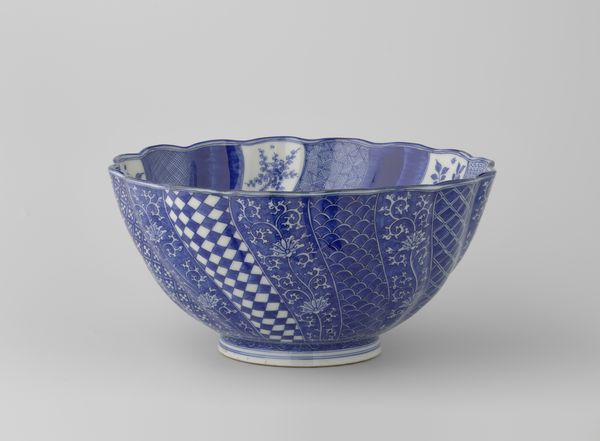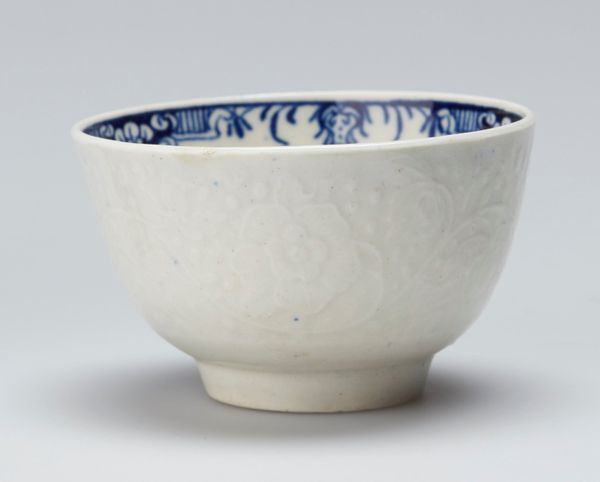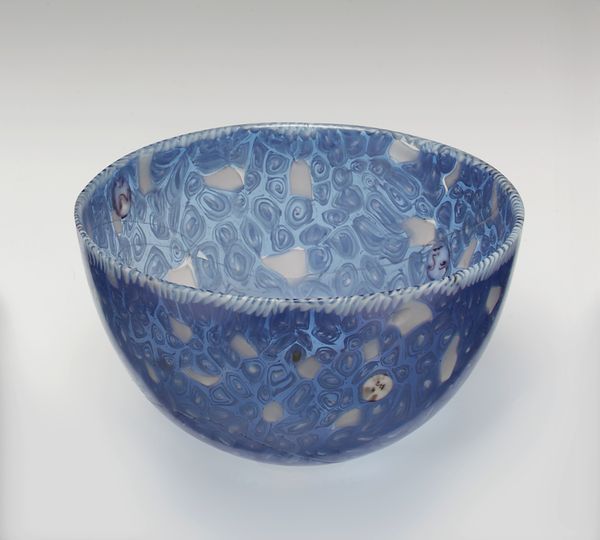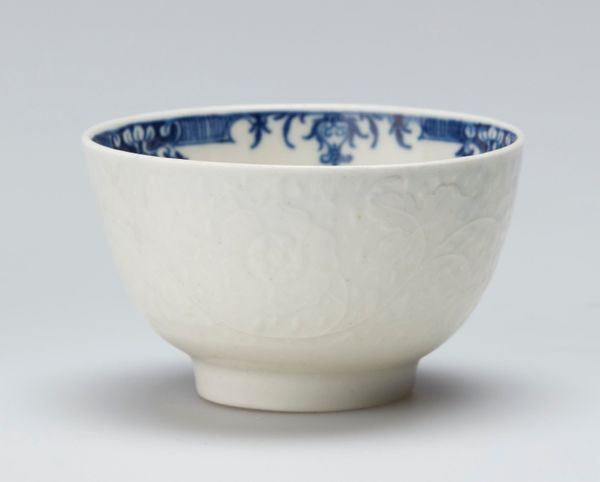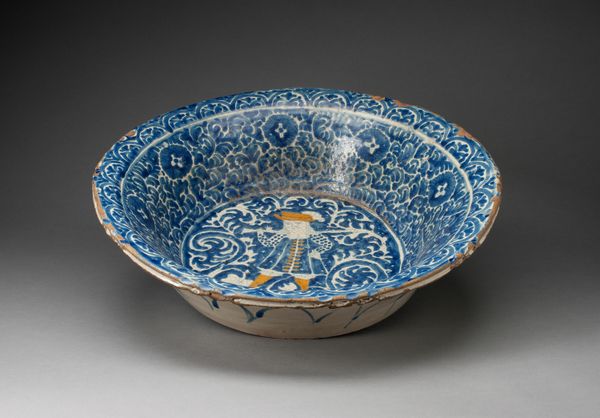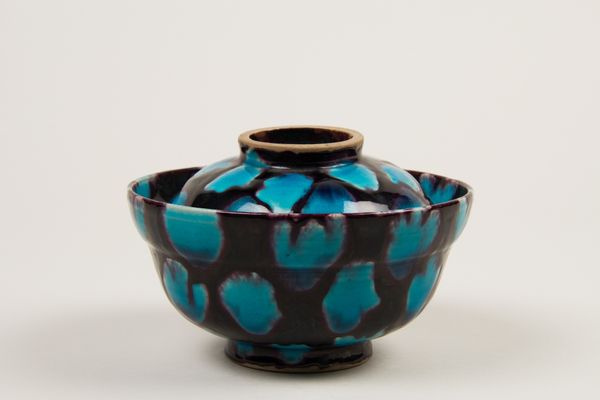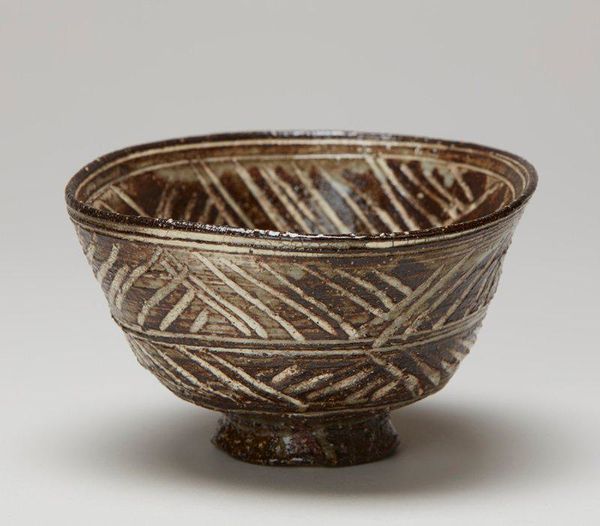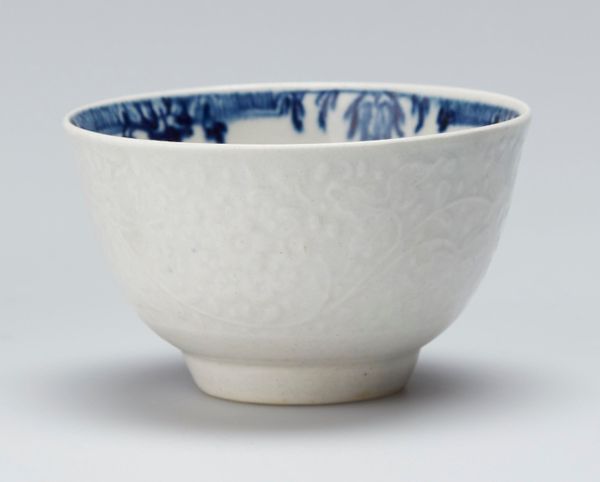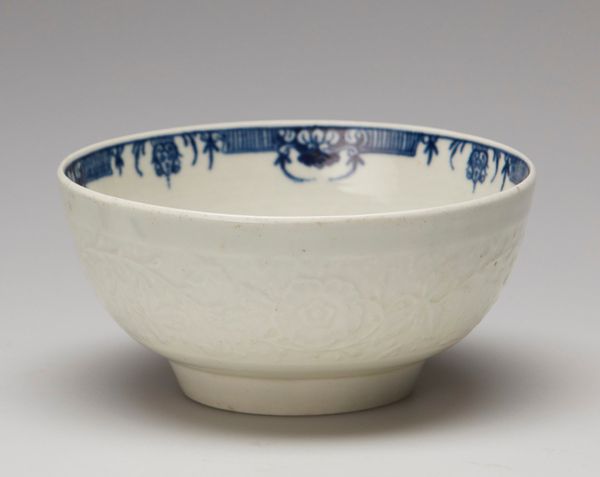
ceramic
#
asian-art
#
ceramic
#
geometric
#
ceramic
#
decorative-art
Dimensions: 3 1/4 × 2 5/8 × 2 5/8 in. (8.26 × 6.67 × 6.67 cm)
Copyright: No Known Copyright
Editor: This elegant ceramic teacup, made by the Fukami Family Workshop around the early 21st century, feels like it’s trying to blend tradition with modernity. The blue and white geometric patterns are intricate, yet the overall form is quite simple. What's your take on this piece? Curator: I see a dialogue between functionality and symbolic representation, a recurring theme in the history of ceramics. Given the Fukami family's history, it would be important to consider their place within the context of artistic lineages and workshops. The choice of geometric and wave patterns is not accidental; they are visual tropes carrying symbolic weight within their culture. Why do you think they're used so pervasively in Asian art? Editor: Well, the wave patterns do remind me of traditional Japanese art, like Hokusai’s Great Wave. Is this piece perhaps reflecting back to a Japanese sensibility, in its visual language and historical associations? Curator: Precisely! But it's important to understand these symbols weren't simply reproduced. There are socioeconomic factors tied into the history and meaning-making behind their choices. Ceramic objects, especially those used in tea ceremonies, also hold significance beyond the purely aesthetic. Does that ring any bells for you? Editor: I guess, objects become powerful carriers of history and cultural memory through ceremonies and daily use. Thanks for expanding my understanding, I see this teacup now as much more than just a pretty object! Curator: Absolutely. Examining the confluence of artistic practices and its broader cultural landscape enables a more nuanced understanding of even the simplest teacup.
Comments
No comments
Be the first to comment and join the conversation on the ultimate creative platform.

